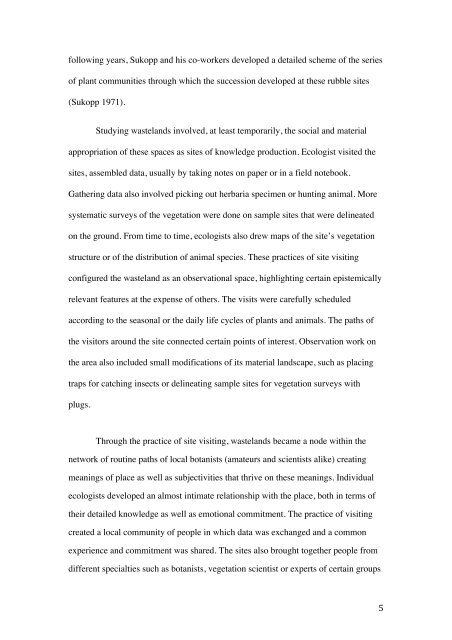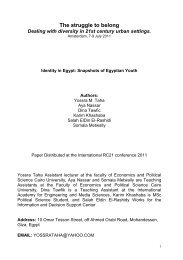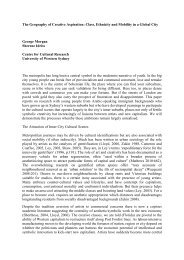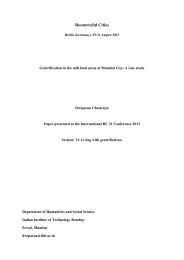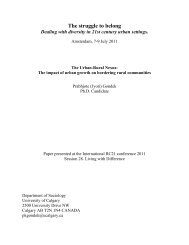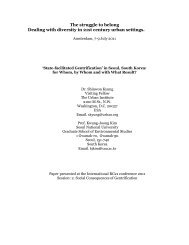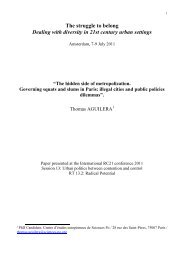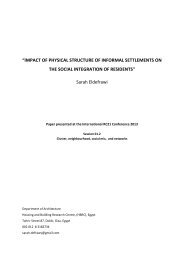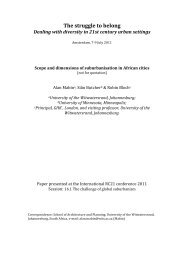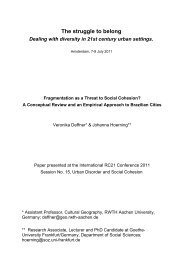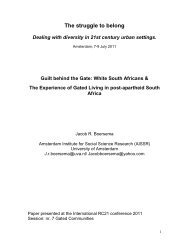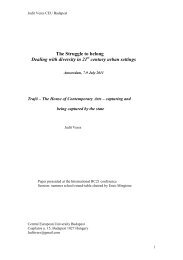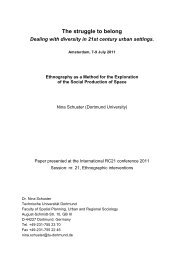The Invention of the Ruderal Area. Urban Ecology and the Struggle ...
The Invention of the Ruderal Area. Urban Ecology and the Struggle ...
The Invention of the Ruderal Area. Urban Ecology and the Struggle ...
You also want an ePaper? Increase the reach of your titles
YUMPU automatically turns print PDFs into web optimized ePapers that Google loves.
following years, Sukopp <strong>and</strong> his co-workers developed a detailed scheme <strong>of</strong> <strong>the</strong> series<br />
<strong>of</strong> plant communities through which <strong>the</strong> succession developed at <strong>the</strong>se rubble sites<br />
(Sukopp 1971).<br />
Studying wastel<strong>and</strong>s involved, at least temporarily, <strong>the</strong> social <strong>and</strong> material<br />
appropriation <strong>of</strong> <strong>the</strong>se spaces as sites <strong>of</strong> knowledge production. Ecologist visited <strong>the</strong><br />
sites, assembled data, usually by taking notes on paper or in a field notebook.<br />
Ga<strong>the</strong>ring data also involved picking out herbaria specimen or hunting animal. More<br />
systematic surveys <strong>of</strong> <strong>the</strong> vegetation were done on sample sites that were delineated<br />
on <strong>the</strong> ground. From time to time, ecologists also drew maps <strong>of</strong> <strong>the</strong> site’s vegetation<br />
structure or <strong>of</strong> <strong>the</strong> distribution <strong>of</strong> animal species. <strong>The</strong>se practices <strong>of</strong> site visiting<br />
configured <strong>the</strong> wastel<strong>and</strong> as an observational space, highlighting certain epistemically<br />
relevant features at <strong>the</strong> expense <strong>of</strong> o<strong>the</strong>rs. <strong>The</strong> visits were carefully scheduled<br />
according to <strong>the</strong> seasonal or <strong>the</strong> daily life cycles <strong>of</strong> plants <strong>and</strong> animals. <strong>The</strong> paths <strong>of</strong><br />
<strong>the</strong> visitors around <strong>the</strong> site connected certain points <strong>of</strong> interest. Observation work on<br />
<strong>the</strong> area also included small modifications <strong>of</strong> its material l<strong>and</strong>scape, such as placing<br />
traps for catching insects or delineating sample sites for vegetation surveys with<br />
plugs.<br />
Through <strong>the</strong> practice <strong>of</strong> site visiting, wastel<strong>and</strong>s became a node within <strong>the</strong><br />
network <strong>of</strong> routine paths <strong>of</strong> local botanists (amateurs <strong>and</strong> scientists alike) creating<br />
meanings <strong>of</strong> place as well as subjectivities that thrive on <strong>the</strong>se meanings. Individual<br />
ecologists developed an almost intimate relationship with <strong>the</strong> place, both in terms <strong>of</strong><br />
<strong>the</strong>ir detailed knowledge as well as emotional commitment. <strong>The</strong> practice <strong>of</strong> visiting<br />
created a local community <strong>of</strong> people in which data was exchanged <strong>and</strong> a common<br />
experience <strong>and</strong> commitment was shared. <strong>The</strong> sites also brought toge<strong>the</strong>r people from<br />
different specialties such as botanists, vegetation scientist or experts <strong>of</strong> certain groups<br />
<br />
5


